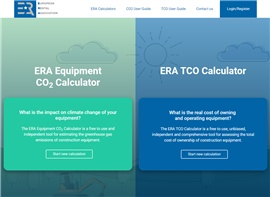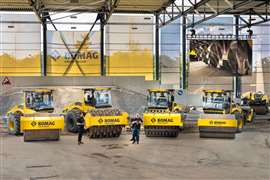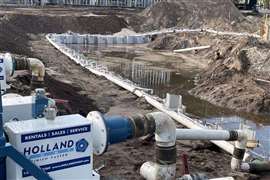Webs of opportunity: why access manufacturers are focusing on spiders
17 June 2025
Once seen as a niche product, today spider lifts are becoming a key focus of some of the world’s biggest access manufacturers. Euan Youdale finds out why.
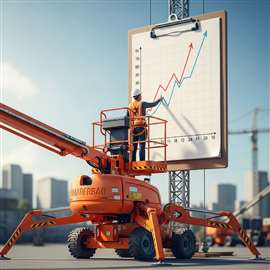 Image: Dall-E2 (using AI)
Image: Dall-E2 (using AI)
The spider lift segment, once a niche corner of the powered access market, is now proving to be a rare bright spot in a turbulent global equipment landscape. Characterised by lightweight design, exceptional outreach, and manoeuvrability in challenging spaces, spider lifts are attracting renewed interest from both manufacturers and rental firms.
In contrast to traditional construction-focused equipment, spider lifts have diversified use cases, ranging from arboriculture to building maintenance, making them less vulnerable to the cyclical swings of the construction industry.
Skewed towards spiders
One such proponent is Oil & Steel, a subsidiary of Manitex International, recently acquired by Japanese crane giant Tadano. While the company remains active in the truck-mounted lift segment, its strategic direction is now clearly skewed toward spiders.
“The 3.5 tonne [GVW truck mount] area is a jungle today,” says Giovanni Tacconi, CEO and VP of Manitex International. “For example, with emissions we don’t know what direction Europe is taking trucks in and which kind of fuel we are going to use. So, we will probably concentrate on the spiders and hold steady on the truck side.”
“By combining our strengths [with Tadano], we will enhance efficiency, expand our capabilities, and be able to quicker introduce new technologies to better serve customers,” Tacconi adds.
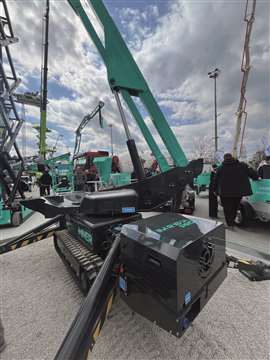 The IM R18 SA Pro was new on the Imer stand at Bauma. Photo: KHL
The IM R18 SA Pro was new on the Imer stand at Bauma. Photo: KHL
Italy’s Imer is another company shifting its focus from high-volume scissor lifts to spider platforms. At Bauma, the company unveiled the IM R18 SA Pro, an 18-metre machine offering 11 metres of outreach at a 90kg load. The unit features automatic outriggers, an auto-home function, and a high-resolution interface display, alongside four available power options.
“We will continue with scissors, but the core business will be spiders. The level of competition in scissors is very strong and it’s a high-volume product,” Imer said.
Manufacturers are also targeting the rental market with increasingly versatile and intuitive machines. Italy-based CMC recently introduced the S20, a 19.9m lift with a 10.4m outreach and enhanced automatic stabilisation.
“With the new S20, we are positioning ourselves in a [market] segment of machines suitable for a wide range of tasks,” says Dieter Roters, managing director of CMC Deutschland. “[We are] aiming to gain a foothold in the rental market, where such equipment must demonstrate its versatility and efficiency, from forestry applications to pure maintenance and construction.”
In Finland, Leguan Lifts presented the Leguan 265, boasting 26.5m of working height and the proprietary EDX system. The platform allows multiple boom movements to be executed simultaneously and precisely, adapting automatically to operator behaviour for a smoother, faster experience.
“We are just getting into rental. We couldn’t do it before because we had very different products,” explains Esa Vuorela, managing director. “But now we have similar machines with the same user interfaces, which makes the equipment rental ready.”
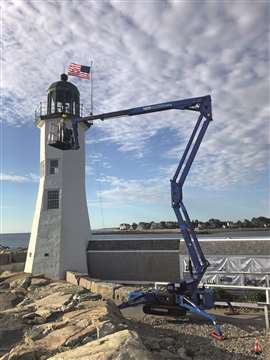 CTE’s new Traccess 230 in the USA. Photo: CTE
CTE’s new Traccess 230 in the USA. Photo: CTE
Elsewhere at Bauma, CTE showcased its revamped Traccess 200, aligned with the 160 and 180 models and now integrated with the S3 Evo control system.
Easy Lift’s RA21 debuted at the event as a compact 21m double-pantograph lift with a 1.8m jib and 10m outreach. Designed for maintenance, tree pruning and restricted access sites, the 2,850kg machine offers gasoline, lithium, and hybrid engine options, and is equipped with proportional controls and optional remote diagnostics.
Palazzani Industries expanded its all-electric Eco series with two new models. The XTJ 52+ Eco, now the tallest electric spider in the range at 52m, features fast-charging capabilities and a 980kg winch. The TSJ 30.1 Eco adds a lightweight, zero-emissions option ideal for urban use. The firm also introduced the TZX 210, a 2.5-tonne, 21.2m machine focused on compactness and towability.
In the United States, the world’s largest market for spider lifts, growth is surging. Teupen, now under the ownership of US-based Altec, plans to introduce a 24m and 27m articulated spider along with a telescopic variant. Martin Borutta, who continues to lead Teupen under Altec, says, “Altec needs our products in the US where there is huge growth for spiders.”
With Altec’s distribution network and support, Teupen expects to double US sales. “Altec gives us additional reserves, along with more market reach and support,” Borutta adds.
Hinowa, now part of JLG, debuted its lithium-powered TeleCrawler30 at Bauma. Reaching 30m and offering a 300kg basket capacity, it extends the TeleCrawler range, which also includes 13m and 22m models. Also on display was the Lightlift 20.10, now in a bi-energy variant, featuring a high-efficiency electric motor and robust hydraulics for precise operation.
And Chinese manufacturer Sinoboom made its European spider lift debut with the SPA27J. With 360-degree rotation, a double-section boom, and adjustable crawlers, the machine marks the company’s formal entry into the segment.
STAY CONNECTED



Receive the information you need when you need it through our world-leading magazines, newsletters and daily briefings.
CONNECT WITH THE TEAM









